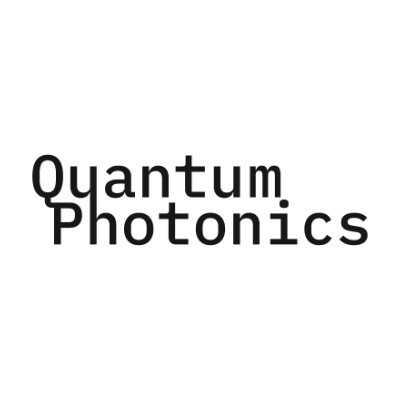Biophotonics: Light in Biotechnology
Biophotonics combines light technology with biology – for more precise diagnostics, innovative therapies, and sustainable biotechnological processes. It is considered a key technology of the future and opens up new perspectives in medicine, research and industry.
Biotechnology has made enormous progress in recent decades – from genome research and medicine to the industrial production of biological substances. One of the most exciting and groundbreaking technologies within this field is biophotonics. It combines the principles of photonics – i.e., light technologies – with biological systems. Biophotonics uses light to detect, influence, or even control biological processes.
What is biophotonics?
Biophotonics refers to the science and technology of the interactions between light and biological tissue. It uses optical technologies to analyze and influence biological processes. These include methods such as fluorescence microscopy, Raman spectroscopy, optical coherence tomography, and laser-based diagnostic and therapeutic procedures.
These technologies enable the non-invasive, high-resolution, and often real-time observation of biological structures and processes. Biophotonics thus offers new tools for research, diagnostics, and therapy – particularly in medicine, pharmaceuticals, and molecular biology.
Applications of biophotonics in biotechnology
1. Early disease diagnosis
A key application of biophotonics is the early detection of diseases. Optical techniques such as fluorescence or Raman spectroscopy allow molecular changes in tissue to be detected even before physical symptoms appear. This allows cancer cells to be identified early on using specific light signatures – often before they metastasize.
This precise diagnostics is not only used in clinical medicine but also plays a key role in pharmaceutical research, for example, in evaluating the effects of new drugs on cell lines.
2. Real-time monitoring of biological processes
Biophotonics enables the live monitoring of biological processes. In biotechnological production processes – such as the manufacture of vaccines, enzymes, or therapeutic proteins – optical sensors can monitor cell activity, metabolism, or product concentration in real time. This not only increases efficiency but also reduces resource consumption through more precise process control.
3. Advances in imaging
Biophotonics imaging techniques, such as confocal microscopy or two-photon microscopy, enable extremely high-resolution images of cellular structures. They are indispensable for researching cellular mechanisms, gene expression, or protein interactions. This technology helps visualize complex biological relationships, particularly in gene therapy and cell research.
4. Light as a therapeutic tool
In addition to diagnostics, light is also used in therapy – for example, in photodynamic therapy (PDT). This involves introducing light-sensitive substances (photosensitizers) into the body that specifically accumulate in tumor cells. Through targeted irradiation with light of specific wavelengths, the substances are activated and specifically destroy the cancer cells without damaging the surrounding healthy tissue.
This method has great potential in oncology and is increasingly being investigated for antibacterial therapies, especially in an age of increasing antibiotic resistance.
5. Biosensors and lab-on-a-chip systems
Biophotonic biosensors enable the detection of tiny amounts of biological or chemical substances – for example, pathogens, toxins, or environmental pollutants. These sensors are used in lab-on-a-chip systems, which perform entire analytical processes on a tiny chip. They are fast, cost-effective, and require only small sample volumes – ideal for point-of-care diagnostics or mobile applications in developing countries.

Why biophotonics is shaping the future
Biophotonics is far more than a technical tool – it is a driver of innovation. The ability to study living systems with light opens up new avenues for researchers to not only observe biological processes but also to specifically influence them. This is particularly relevant in personalized medicine, where individual clinical pictures can be precisely analyzed and appropriate therapies can be derived.
Biophotonics also contributes to making biotechnological processes more efficient, sustainable, and economical. Light-based technologies are generally non-destructive, do not require large quantities of reagents, and enable automated analyses – important advantages in an increasingly resource-conscious environment.
Challenges and future prospects
Despite its promising potential, biophotonics also faces challenges: the complexity of biological systems, the cost of high-precision optical components, and integration into existing biotechnological processes require continuous research and development.
Nevertheless, the trend is clear: Biophotonics is becoming a key technology in modern biotechnology. It not only helps detect diseases earlier and more precisely, but also offers new therapeutic options and contributes to the development of intelligent, resource-efficient production systems.
In the future, biophotonic processes could also play a central role in synthetic biology, personalized medicine, and agricultural technology. The combination with artificial intelligence, big data, and automation will enable the analysis and processing of large amounts of data – for example, for the identification of new active ingredients or the optimization of cell lines.
Conclusion
Biophotonics exemplifies interdisciplinary progress in biotechnology. The combination of light technology with biological applications creates a powerful toolkit for diagnostics, therapy, and research. The advantages – high precision, real-time analysis, and minimal invasiveness – make biophotonics one of the most innovative disciplines in modern life sciences.
With increasing integration into existing biotechnological processes and the further development of optical technologies, its influence will continue to grow. Anyone working in research, medicine, or biotechnology today can hardly avoid biophotonics.


